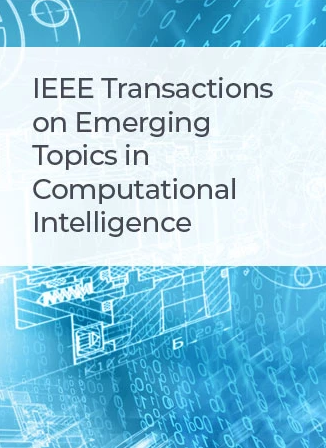基于改进的代用模型辅助进化算法的视频局部调光技术
IF 5.3
3区 计算机科学
Q1 COMPUTER SCIENCE, ARTIFICIAL INTELLIGENCE
IEEE Transactions on Emerging Topics in Computational Intelligence
Pub Date : 2024-03-18
DOI:10.1109/TETCI.2024.3370033
引用次数: 0
摘要
与传统的液晶显示器(LCD)系统相比,局部调光系统能以更低的功耗获得更高的显示质量。将静态图像的局部调光视为一个优化问题,并基于进化算法进行求解,可以得到一组最佳背光矩阵。然而,基于进化算法的局部调光算法已不适用于视频序列,因为计算非常耗时。本文提出了一种基于改进代理模型辅助进化算法(ISAEA-LD)的局部调光算法。在该算法中,代用模型辅助进化算法被用于解决视频序列的局部调光问题。代用模型用于降低进化算法个体适应度评估的复杂性。首先,采用基于卷积神经网络的代用模型来提高代用模型个体适配性评估的准确性。其次,该算法引入了基于视频序列相邻帧内容相关性的背光更新策略和基于迁移学习的模型迁移策略,以提高算法的效率。实验结果表明,所提出的 ISAEA-LD 算法可以获得更好的视觉质量和更高的算法效率。本文章由计算机程序翻译,如有差异,请以英文原文为准。
Local Dimming for Video Based on an Improved Surrogate Model Assisted Evolutionary Algorithm
Compared with the traditional liquid crystal displays (LCD) systems, the local dimming systems can obtain higher display quality with lower power consumption. Considering local dimming of the static image as an optimization problem and solving it based on an evolutionary algorithm, a set of optimal backlight matrix can be obtained. However, the local dimming algorithm based on evolutionary algorithm is no longer applicable for the video sequences because the calculation is very time-consuming. This paper proposes a local dimming algorithm based on improved surrogate model assisted evolutional algorithm (ISAEA-LD). In this algorithm, the surrogate model assisted evolutionary algorithm is applied to solve the local dimming problem of the video sequences. The surrogate model is used to reduce the complexity of individual fitness evaluation of the evolutionary algorithm. Firstly, a surrogate model based on convolutional neural network is adopted to improve the accuracy of individual fitness evaluation of surrogate model. Secondly, the algorithm introduces the backlight update strategy based on the content correlation between the video sequences' adjacent frames and the model transfer strategy based on transfer learning to improve the efficiency of the algorithm. Experimental results show that the proposed ISAEA-LD algorithm can obtain better visual quality and higher algorithm efficiency.
求助全文
通过发布文献求助,成功后即可免费获取论文全文。
去求助
来源期刊

IEEE Transactions on Emerging Topics in Computational Intelligence
Mathematics-Control and Optimization
CiteScore
10.30
自引率
7.50%
发文量
147
期刊介绍:
The IEEE Transactions on Emerging Topics in Computational Intelligence (TETCI) publishes original articles on emerging aspects of computational intelligence, including theory, applications, and surveys.
TETCI is an electronics only publication. TETCI publishes six issues per year.
Authors are encouraged to submit manuscripts in any emerging topic in computational intelligence, especially nature-inspired computing topics not covered by other IEEE Computational Intelligence Society journals. A few such illustrative examples are glial cell networks, computational neuroscience, Brain Computer Interface, ambient intelligence, non-fuzzy computing with words, artificial life, cultural learning, artificial endocrine networks, social reasoning, artificial hormone networks, computational intelligence for the IoT and Smart-X technologies.
 求助内容:
求助内容: 应助结果提醒方式:
应助结果提醒方式:


